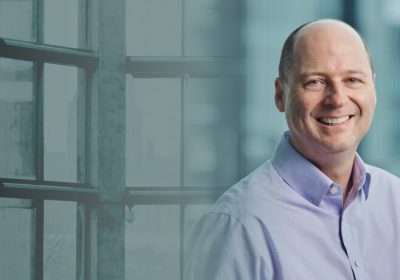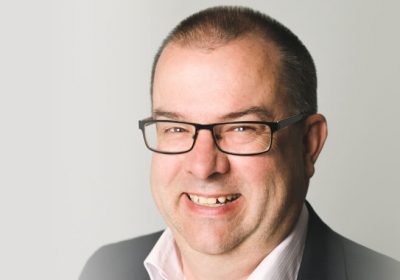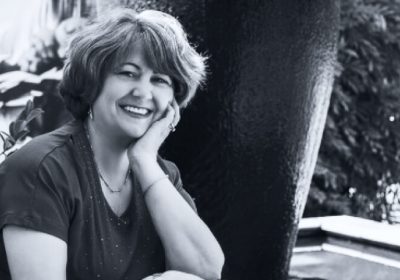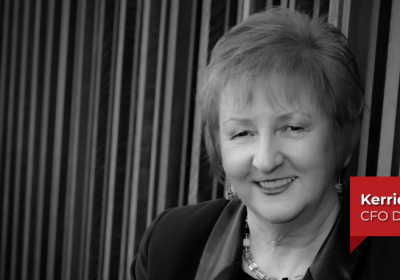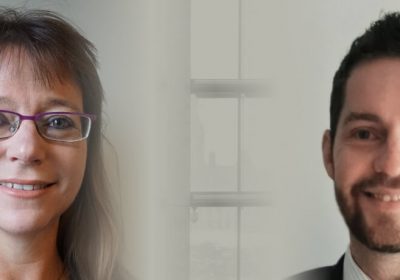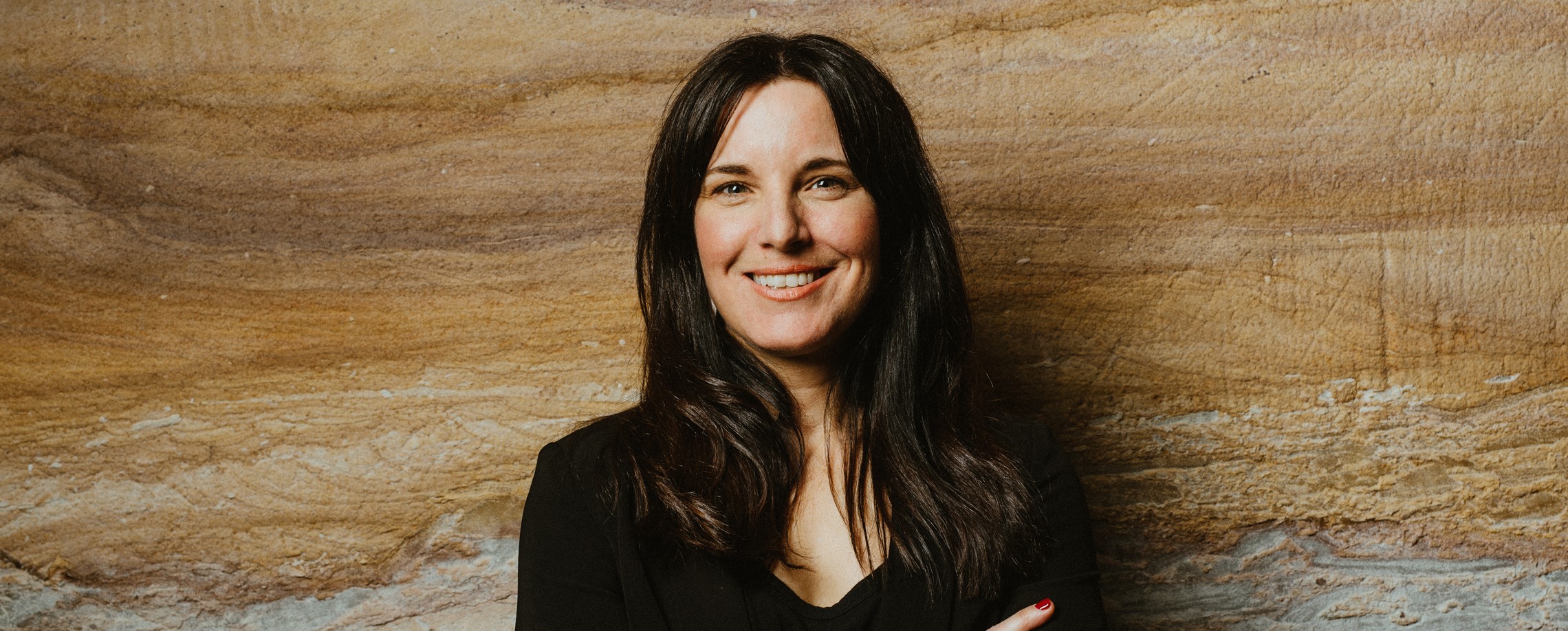
- Author: Jessica Mudditt
- Posted: June 13, 2023
From African power stations to avant-garde art > Annette Garozzo, CFO, Mona
Annette Garozzo’s accounting career has spanned several continents and sectors, and today she is CFO of the nation’s best known and consistently provocative art museum, Mona.
As a teenager growing up in South Africa’s capital city of Pretoria, Annette Garozzo had no interest in accounting.
“I wasn’t a numbers person and I almost failed accounting in Grade 9,” she says.
Garozzo envisioned a future as a lawyer and even began studying Latin as part of her preparations for a law degree. Then a love of writing took over and she contemplated a degree in journalism.
However, her mother was a pragmatic single parent who advised her daughter to pursue a more financially stable profession.
“At the time, I was taking Business Studies as a subject at high school. Luckily, all of a sudden the accounting rules began to make sense to me,” she says.
Garozzo completed an undergraduate degree in financial management and then obtained a qualification with the Chartered Institute of Management Accountants (CIMA).
She then embarked on a rite of passage for young South Africans (and Aussies) by heading off to London for a working holiday.
In 2005, Garozzo began a one-year internship in Johannesburg at the multinational German engineering company, Siemens. It led to being offered a permanent role as a junior management accountant in the multinational’s energy service division.
Over the course of the next nine years, Garozzo was promoted four times. She worked closely with the CFO of Siemens Energy, Africa Cluster, as well as with the state-owned energy utility, Eskom.
Keeping the lights on
Garozzo’s work was inherently challenging work for a variety of reasons. South Africa had faced electricity shortages for decades. The energy sector was dominated by a state-monopoly and there had been inadequate maintenance of existing plants and a lack of new power stations built to keep up with increased demand.
“The energy sector in South Africa is quite unstable, and it has become worse since I was there. Keeping the lights on was a constant challenge,” she says.
“Of course, we wanted to make a profit but we also had a responsibility to the public to provide electricity. We were always treading a fine line between doing what was best for the company and the country.”
Garozzo was involved with projects that saw decommissioned ‘mothball’ power stations brought back to life.
“I visited the power stations at every chance I could, because it helped me to marry up the numbers with what was happening out in the field. I was better able to communicate with the project managers,” she says.
Cross-cultural contexts
As a sector management accountant, Garozzo was responsible for Financial Performance Management for Southern Africa and the regional cluster of Tanzania, Morocco, Tunisia, Ghana and Nigeria, where she travelled widely. A number of these economies were experiencing rapid growth and keeping up with surging energy demands was challenging.
With key responsibilities in managing and controlling financial KPIs, Annette was required to navigate different work cultures at Siemens South Africa and the head office in Munich.
“We needed to balance a flexible style of doing business in South Africa with a more risk averse approach in Germany. We had to be very organised to meet the demands of head office,” she says.
Garozzo has always been a keen traveller, so she leapt at the chance to do a secondment in Denmark in 2015 with Siemens Renewable Energy. It was exciting to have the rest of Europe on her doorstep, but Garozzo and her husband had swapped summer in South Africa for -15 temperatures and life in a very small town. Initially, life outside of work felt dull.
“As we started to speak to more people, we got to know the culture,” she says. “There is a saying in Denmark that there’s no such thing as bad weather – only the wrong clothes. We went and got cold weather gear and started hiking in the snow on weekends.”
Garozzo enjoyed being responsible for operational financial planning and the analysis of four wind turbine factories. She also managed monthly forecasting input for the production accounting team, plus annual budget preparations and presentation. Her main focus was on cost-saving initiatives.
Tassie dreaming
After two years, Garozzo and her young family relocated to Sydney, where her husband had grown up and had family. Garozzo found a position as a management accountant at a digital health agency. However, they did not warm to Sydney.
“After living in a small town in Denmark with great amenities and no traffic, Sydney wasn’t quite the right fit for us,” she says.
During a quick getaway to Tasmania, it was love at first sight for Garozzo and her husband.
“It almost had a Scandinavian feel to it, with its cool climate, trees and mountains, and the way people live outdoors all year round.”
Garozzo was also awed by the island state’s premier tourist attraction, Mona (Museum of Old and New Art).
“I see my role as doing the right thing with the finance that’s invested. That means not being wasteful, and making sure that we continue to deliver economic value to Tasmanians, as well as supporting our values, such as sustainability. As a finance team, we need to be agile.”
Annette Garozzo, CFO | Mona
They returned to their jobs in Sydney but kept thinking about how they could move to Hobart.
“My husband is a project manager, so he daydreams in very practical ways,” says Garozzo. “He was checking out the real estate market and jobs market in Tasmania one day when he showed me a job going at Mona that was listed on SEEK. I read the job description. And then I ran to my laptop and wrote a cover letter.”
Garozzo joined Mona as company accountant in 2018, where she reported to the CFO. After three years, the CFO role became vacant and Garozzo was offered the position.
“It was sooner than I expected. But of course, I wasn’t going to say no,” she says with a laugh.
Today, Garozzo and her family live very happily in a small suburb south of Hobart that is close to the beach and nature trails.
A unique workplace
Garozzo’s team of 15 are responsible for managing what is known as the ‘Mona group’ which includes the museum, two wineries, a brewery, restaurants, a creative technology engineering company, an arts holding entity and more. The finance team functions as a group finance team, with some team members acting as a shared service across the entities, while some are dedicated to a single entity.
“I’ve structured the accounting team so that there is one finance rep for each cluster,” she explains.
“They work with the cluster lead on whatever is needed, whether it be reporting, budgeting, forecasting or business plans. It’s important to me that there is a trusted business partner relationship between the business and finance. It is also more efficient because the dedicated finance person gets to know that part of the business very well. And at the same time, I have the support of an exceptional 2IC in our finance manager.”
Creating an inclusive and flexible work culture is important to Garozzo. She also strives to demonstrate by example that it is possible for women with families to take up senior leadership roles in finance.
“I am conscious that I’m a woman with a family and I promote flexible work practices so that whatever stage of life a person is in – whether they have small children or an elderly mother to care for – that they can fulfil those responsibilities. We are all human and we have things happening at home – you shouldn’t have to leave those things at the door.”
Promoting opportunities for professional development is also part of Garozzo’s leadership style, because she believes it leads to a high performance culture.
“You get an exponential return on time invested in learning – both for performance and productivity,” she says.
A colourful patron
Mona was founded in 2010 by millionaire David Walsh and it is the largest privately funded museum in the Southern Hemisphere. Its artistic significance has been likened to the Guggenheim Museum in Bilbao.
Every year, Walsh invests up to $18 million of his private wealth into the museum to cover running costs. The financial arrangement is highly unusual for a CFO, says Garozzo.
“An accounting job is usually all about the bottom line. At Mona it is about delivering a unique visitor experience and making a contribution to the arts,” she says.
“I see my role as doing the right thing with the finance that’s invested. That means not being wasteful, and making sure that we continue to deliver economic value to Tasmanians, as well as supporting our values, such as sustainability. As a finance team, we need to be agile.”
Mona was in the business of digital disruption before the concept became a buzzword, says Garozzo.
“David [Walsh] doesn’t care for wall labels. He said he wouldn’t open Mona if he had to have a white piece of paper on the wall next to an artwork. He also doesn’t care for queuing.”
Visitors use the O App to have their location in the mostly underground museum detected via wireless sensors. It then provides information on the artwork they are looking at, along with interviews and other highlights. Queueing is avoided because the visitor receives a prompt when it is their turn to visit a particular exhibit.
With continuous digital disruption a mainstay of Mona’s organisational culture, Garozzo is supported in her decision to upgrade the ERP system. The overhaul will begin sometime in the next financial year.
“For a CFO, it’s a scary but exciting project. We have systems that don’t talk to each other, so it is time to bring everything in line with what can be done in 2023.”



